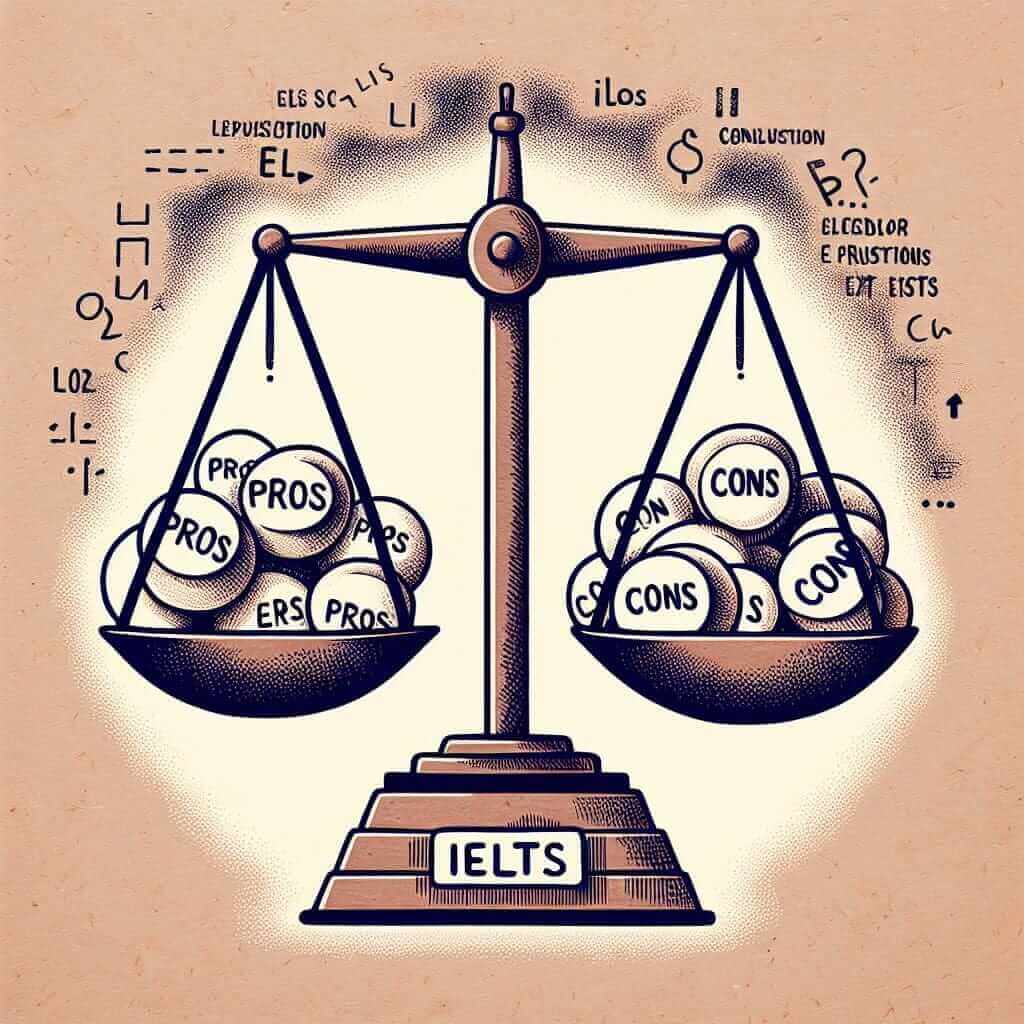“On balance” is a sophisticated linking phrase that indicates a conclusion drawn after considering both sides of an issue. Mastering its usage can significantly enhance your IELTS writing and speaking scores, showcasing a nuanced understanding of language. This phrase is particularly useful in essays where you need to weigh different perspectives before presenting your overall viewpoint.
Here are a few examples of how “on balance” can be used in different sections of the IELTS exam:
- Writing Task 2: “On balance, while technology has brought many benefits, its impact on social interaction has been largely negative.” (This sentence effectively summarizes the essay’s argument after discussing both the positive and negative aspects of technology.)
- Speaking Part 3: “Well, there are pros and cons to living in a big city, but on balance, I believe the advantages outweigh the disadvantages.” (Here, the speaker uses “on balance” to express a considered opinion after acknowledging both sides of city life.)
Understanding “On Balance”
“On balance” is often used synonymously with phrases like:
- Overall
- All things considered
- Taking everything into account
- Weighing the pros and cons
- In conclusion
- To summarize
These phrases all signal a concluding statement that takes into consideration all previously mentioned arguments or viewpoints. Using “on balance” effectively demonstrates a strong command of English and allows for more sophisticated and nuanced expression in your writing and speaking.
Using “On Balance” in Your IELTS Exam
Formula and Grammatical Considerations:
While there isn’t a strict grammatical formula for using “on balance,” it typically appears:
- At the beginning of a sentence: “On balance, the government’s decision to invest in renewable energy is a positive step.”
- In the middle of a sentence: “The evidence suggests that, on balance, a plant-based diet is healthier.”

Application in Different IELTS Sections:
-
Writing Task 2:
- Ideal for presenting your final opinion or summarizing a balanced discussion.
- Example: “Some argue that globalization leads to cultural homogenization. However, others believe it promotes cultural exchange. On balance, globalization seems to foster a more interconnected and culturally diverse world.”
-
Speaking Part 3:
- Useful for providing well-rounded answers to complex questions.
- Example: “It’s true that social media can be addictive. However, it also allows us to connect with people globally. On balance, I think it’s a valuable tool if used responsibly.”
Tips for Effective Usage:
- Use “on balance” sparingly. Overusing it can make your writing or speech sound repetitive.
- Ensure you’ve presented both sides of the argument before using “on balance” to signal your conclusion.
- Consider using synonyms like “overall” or “taking everything into account” to vary your language.
Common Errors to Avoid:
- Using “on balance” without actually weighing different perspectives. This can make your argument appear underdeveloped.
- Placing “on balance” incorrectly within a sentence, leading to grammatical errors and confusion.
Conclusion
Mastering the use of “on balance” is a valuable asset for achieving a high score in the IELTS exam. By understanding its meaning, application, and common pitfalls, you can significantly enhance the clarity and sophistication of your language. Remember to practice incorporating it into your writing and speaking to build confidence and fluency. You can find more helpful tips on improving your vocabulary for IELTS on reputable websites like ielts.net. Good luck with your IELTS preparation!